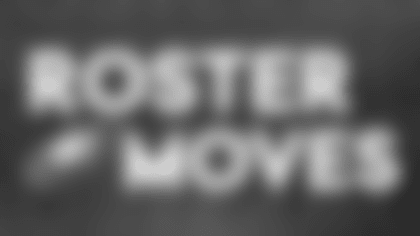
Saturday was a fun night if you're an Eagles fan. A lot of questions fans had entering the preseason were answered in a big way. The first-team defense once again looked stout up front and the secondary had another strong performance as newcomers like Walter Thurmond continued to produce on the back end. The run game was efficient, productive and hard-nosed. The offensive line opened up holes and kept the quarterback upright.
Speaking of the quarterback, well, he was perfect. Sam Bradford's 10-of-10 performance with three touchdowns was as great a second outing as you could ask for. Bradford was accurate, decisive and he kept the Eagles "on schedule" the entire time he was in the game.
Head coach Chip Kelly spoke after the Ravens game last week and talked about how, at this point in the preseason, they only use a handful of plays throughout the game, and that was again the case against Green Bay. What were the concepts that Bradford had the most success with? Let's take a look.

This is the first play of the game, and the Eagles are running a concept we've covered many times before, one I've always known as "snag," but you'll see a lot of people refer to as "spot" or "triangle." It features a corner route (Brent Celek on this play), a mini-curl route (Nelson Agholor) and a flat route (DeMarco Murray). Why do some people refer to this as "triangle"? It creates a triangle read for the quarterback.

The three routes combine to create three points of a triangle. How those routes open up and how the defenders react to them will affect where the quarterback decides to go with the football. But the beauty of this concept (and why pretty much every team in the NFL runs it) is that it's so versatile. There is a vertical stretch element (coming from the corner route and flat route) and a horizontal stretch element (the flat route and the curl route). It can win against man, and it can win against zone. As long as the quarterback can quickly diagnose what the defense is doing, he can deliver the ball early and pick up positive yardage.
It's first-and-10, and when Bradford sees that there's too much going on inside, he dumps it off to Murray, who picks up 5 yards. We've heard this phrase a lot over the past couple of years, but this is an example of the quarterback keeping the offense "on schedule" to bring up second-and-5.
Let's fast forward now to the second series. It's second-and-3, and again we've got a "snag" concept. Except this time Jordan Matthews runs the corner, Riley Cooper has the curl and Celek is in the flat. Same concept, same triangle read, but different formation and personnel.
Right at the snap, Bradford reads man coverage. The corner route should be open every time against man coverage because there's a huge void outside the numbers. Bradford floats it up to Matthews, who goes 27 yards for the first down to move the chains.
A few plays later, the Eagles dialed up the same play again down in the red zone.
This time, the Packers were in quarters coverage, with four deep defenders and three underneath, so what does Bradford do? It becomes a horizontal stretch on the flat defender. The Packers slot corner, No. 33 Micah Hyde, is in no man's land, as he's forced to defend both the flat route by Matthews and the curl route by Miles Austin. Bradford sees him expand to the sideline, and he hits Matthews for a 7-yard gain and a near touchdown.
In those three plays, the defense played against the route concept three different ways using three different coverages. Bradford reacted by delivering the ball early to all three separate reads in the play. This was great execution by the quarterback.
One of the other concepts we've seen a lot of the past few years is the "drive" concept. It's run in a number of different ways, both by the Eagles' offense and by teams all across the football landscape. The key component of the drive concept, however, is the shallow cross route (which many call a "drive" route for that purpose). Let's take a look at a pair of plays that the Eagles ran on Saturday against Green Bay that featured this concept.

This is the first touchdown to Darren Sproles, who is lined up in the backfield. He's obviously a matchup problem against linebackers when he's out in space. Matthews runs a shallow cross route coming from the slot at the top, and Sproles uses the wheel route to dart out of the backfield.
With two vertical routes coming from the left side of the formation, the linebacker covering Sproles has trouble navigating through traffic and putting himself in position to defend the wheel. This is a no-brainer for Bradford, who makes a beautiful throw to get the Eagles on the board.
But even if the wheel was defended, Matthews is open as well. This is why teams run wheel routes to the same side of the of the drag route, because it helps to remove an underneath defender (in this case, the linebacker covering Sproles), to help create space in the middle of the field.
On the first play of the Eagles' third drive, they again went to the drive concept, but from a different look.

This time, there's no wheel out of the backfield, as Murray is kept in to pass protect against a zone pressure from the Packers. Sproles, lined up in the slot, will run the drive route, and with two vertical routes on the other side, look at all the space created for him to run into.
Those two vertical routes occupied the attention of the defenders to that side, and Sproles took the Bradford pass for a huge 33-yard gain and a first down. Sproles is going to be a major factor in the passing game this season for the Eagles, whether he lines up in the backfield, in the slot or out wide.
The last concept we'll cover from Bradford and the Eagles against Green Bay is one that this team has used numerous times in the past to defeat man coverage, a shallow cross concept I've always known as "mesh." You've got three crossing routes over the ball, and you're trying to create as much confusion as possible in the middle of the field for defenders to get loss in the mess. Ideally, at least one receiver breaks free every time this is run, and with a vertical route on the outside, you've got an explosive element to this play if that matchup favors the offense.
On this play, Agholor and Celek run across the field from the top of the screen, with Matthews coming underneath. The corner defending Matthews gets lost in traffic, and Matthews gains 7 yards and a first down thanks to a quick decision by Bradford.
Four plays later, deep in Green Bay territory, it's the exact same play call, just with some different window dressing.
Ryan Mathews went vertical with a wheel route. The three crossing routes over the middle are Celek and Cooper from the top, and Trey Burton from the bottom. Running this play takes a lot of practice from the receivers because of the timing and understanding what defense the other team is employing on that play. Burton hesitated a little bit, looking to help create interference for the defender over Celek, then breaks free to catch a touchdown from Bradford.
Bradford looked to Mathews out of the backfield. Like I said earlier, if that matchup is favorable to the offense - say with an athletic running back against a slower linebacker - the quarterback always has the ability to go to that throw and take advantage of a one-on-one situation. Bradford thought about it, saw that the wheel is covered, and made an athletic throw off-balance to a moving target for a touchdown. Great throw by Bradford and a really athletic play.
Bradford's first touchdown came on the drive concept and his second came on the shallow cross, but his third one may have been my favorite of the night.

Down in the red zone, the Packers are playing quarters coverage with four deep defenders and three underneath. With a high-low concept to the left, Bradford looked there first before hitting Celek on the post route in the middle of the field.
At the snap, Bradford looked to his left and stayed there. Look at how his eyes influenced the boundary safety, who drifted toward the sideline and the vertical route, taking him away from his responsibility in the middle of the field. Bradford saw it, turned his head and delivered the ball on point to Celek in the back of the end zone immediately - a veteran move by Bradford.
You can see from the end zone angle that Bradford purposely looked the safety off. As soon as he turned toward Celek he's getting ready to deliver the ball. Loved seeing this from Bradford.
Defensively, just count on the fact that I'm going to include a couple of shots each week of the line just destroying run plays with its combination of power and athleticism. I'm just going to leave these here.
The outside linebacker has been a position of focus from fans and media alike this preseason, and for good reason. The departure of Trent Cole makes Brandon Graham a full-time starter at outside linebacker, which he hadn't done before. Behind him, Marcus Smith was looking to prove himself early, but his injury made the question of depth only get bigger. How did that group perform on Saturday night? In one of the most important phases of the position, I thought they fared very well.
Chip Kelly has always said that he wants his outside linebackers to be able to rush the passer, set the edge in the run game and drop into coverage. The coverage aspect of that equation may be the least important in the overall scheme of things, while in my opinion the pass rush and run game factors are pretty equal. Against the run, I thought Graham had one of his best games on Saturday against Green Bay. Here he set the edge, shocked the tight end on contact, then made a play on the ball carrier. We saw plays like this from Graham a year ago, but seeing it on a consistent basis for 65 snaps a game was what fans worried about most entering the season. I, for one, am really excited to see Graham as a the starter in 2015.
With Smith out of the lineup, the backup outside linebacker duties are falling to a few individuals. Bryan Braman, a core special teams player, has played well on defense this preseason, especially as a pass rusher. Diaheem Watkins has flashed as well, and I think he has an outside shot at making the roster. The two players I wanted to focus on, however, are Vinny Curry and Brad Jones.
Here's Curry on Saturday setting the edge against the Green Bay left tackle, stacking him and falling off the block to get the tackle in the run game.
And here's Jones, who was signed as an inside linebacker but has the ability to play both positions, doing the same thing in this play. If the Eagles can get quality snaps as a committee from the likes of Smith, Curry, Jones and Braman, they should be able to rotate much like they did in 2014 with Graham coming off the bench.
Up front, the Eagles were stout again against the run, but I was really impressed with their play on the back end as well at times. Take, for instance, this second-and-9 play early in the first quarter.
The Packers ran a bootleg to the left off of stretch-run action. First, as usual, you can see the disruption up front from Cedric Thornton, who changes the line of scrimmage and would've been there to stop the run if the ball was handed off.
But when rookie quarterback Brett Hundley rolls to his left, look at what options he has at his disposal. Nolan Carroll (No. 1) completely takes away the comeback route, Graham (No. 2) eliminates the flat route underneath and the duo of DeMeco Ryans and Mychal Kendricks (No. 3) erase the over route from the tight end. With Malcolm Jenkins securing the deep middle as well, Hundley has nowhere to go with the ball, as he's forced to run back to the opposite side of the field and scramble for a short gain to bring up third-and-long. This kind of team defense is what can take this unit to the next level in 2015.
It's always great to see the young guys contribute on special teams, and the Eagles are certainly getting that right now from a number of the young guys on defense. In particular, Jordan Hicks starts on all four of the core units (kickoff, kickoff return, punt and punt return), and Eric Rowe is on three of the four (kickoff, punt and punt return). Both draft picks made nice plays on special teams against the Packers. Let's start first on the opening play of the game, a big kick return for fellow rookie Raheem Mostert.
Hicks tattooed the first man downfield, then looked for more work as he blocks a second guy to help Mostert break free. Hicks has really improved all summer long in the third phase of the game, and you may remember a block he made in the first game against the Colts to help spring Kenjon Barner for a touchdown. I would expect he will be a big part of the special teams in 2015.
Rowe has made an impact as well. A starting gunner and jammer on the punt and punt return teams, his length and athleticism really come into play in this phase of the game. His relentless attitude, however, is what really stood out to me on this play.
Lined up as the right gunner, Rowe beat the Green Bay jammer off the ball and gets down the field, only to be held and dragged to the ground (notice the penalty flags). What does Rowe do? He pops right up and makes the tackle anyway, bringing down the Packers returner after a short gain. You have to love seeing plays like this from rookie draft picks, especially ones who are picked higher in the draft, on special teams.
Fran Duffy is the producer of "Eagles Game Plan" which can be seen on Saturdays during the season. Be sure to also check out the "Eagle Eye In The Sky" podcast on the Philadelphia Eagles podcast channel on iTunes. Prior to joining the Eagles in 2011, Duffy was the head video coordinator for the Temple University Football team under former head coach Al Golden. In that role, he spent thousands of hours shooting, logging and assisting with the breakdown of the All-22 film from the team's games, practices and opponents.















